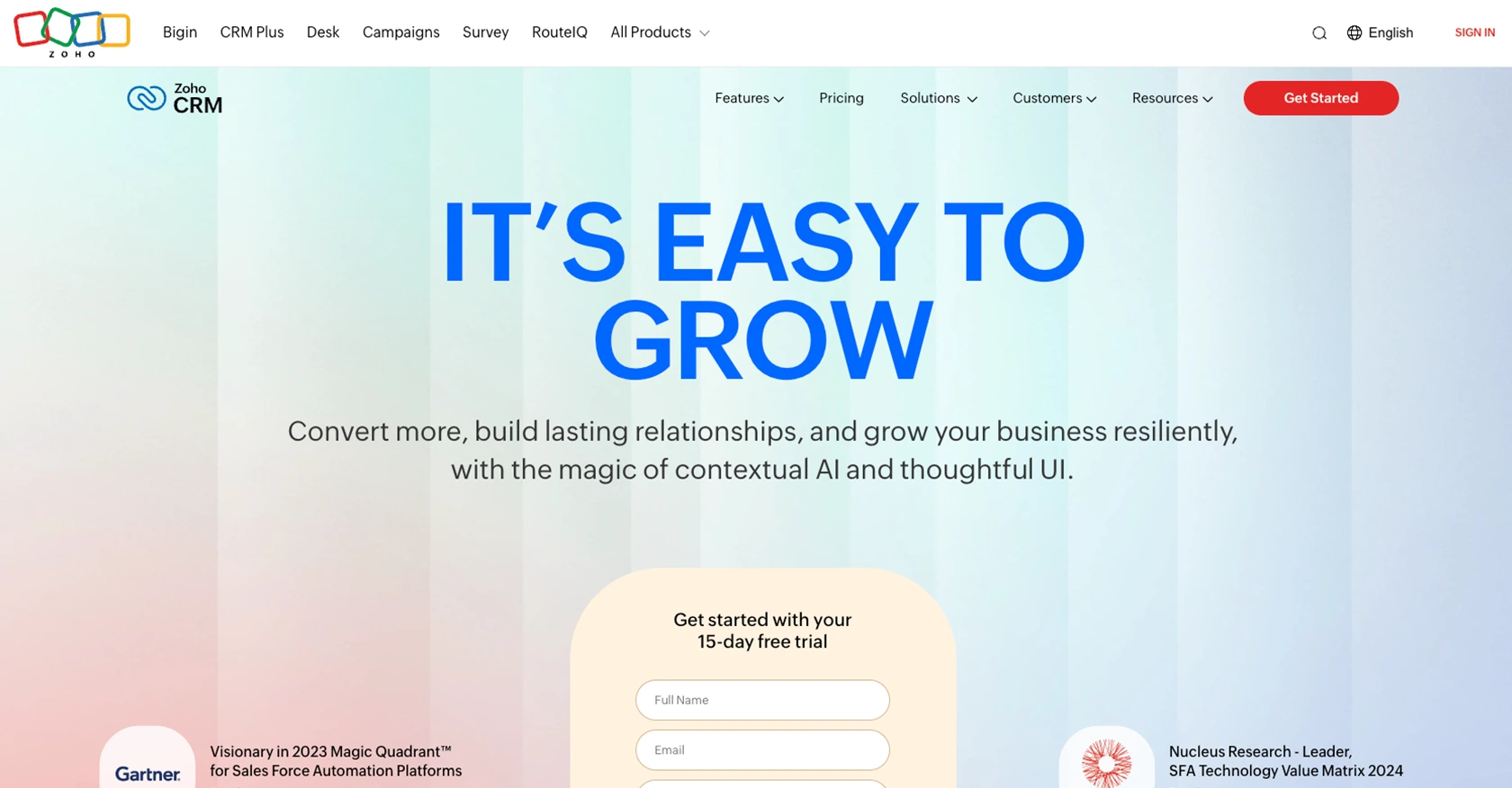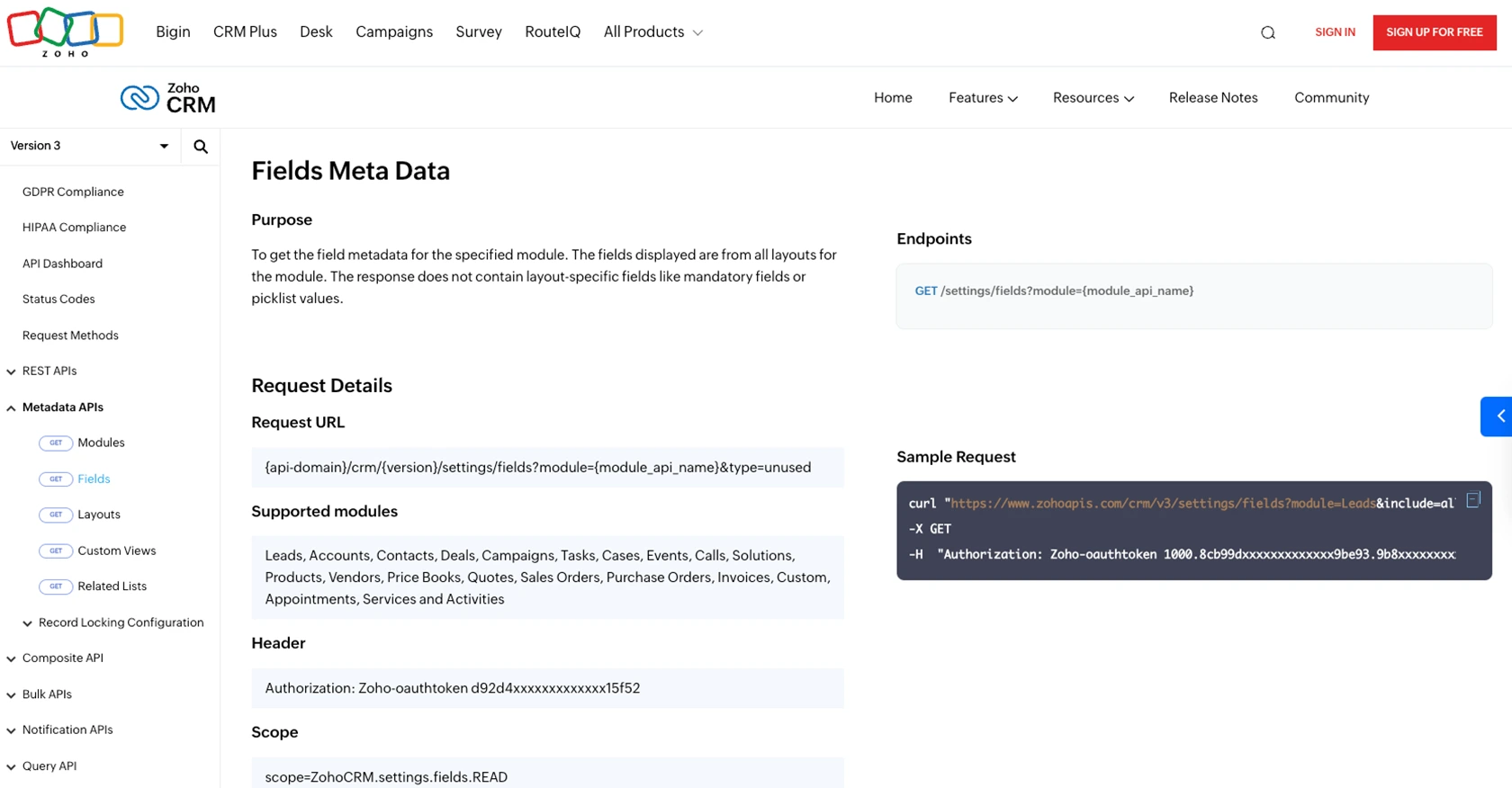Using the Zoho CRM API to Get Leads in Python

Introduction to Zoho CRM and Its API Integration
Zoho CRM is a comprehensive customer relationship management platform that helps businesses manage their sales, marketing, and support in a single system. Known for its flexibility and scalability, Zoho CRM is a popular choice for businesses looking to enhance their customer engagement and streamline operations.
Integrating with Zoho CRM's API allows developers to automate and enhance various business processes. For example, using the Zoho CRM API to retrieve leads can help sales teams quickly access potential customer information, enabling them to tailor their outreach and improve conversion rates.
This article will guide you through using Python to interact with the Zoho CRM API, specifically focusing on retrieving leads. By following this tutorial, you'll learn how to efficiently access and manage lead data, which can be crucial for driving your business's growth.
Setting Up Your Zoho CRM Sandbox Account for API Integration
Before diving into the Zoho CRM API integration, it's essential to set up a sandbox account. This environment allows developers to test API interactions without affecting live data, ensuring a smooth integration process.
Creating a Zoho CRM Sandbox Account
If you don't have a Zoho CRM account, start by signing up for a free trial on the Zoho CRM website. Follow the instructions to create your account. If you already have an account, log in and navigate to the sandbox section.
Registering Your Application for OAuth Authentication
Zoho CRM uses OAuth 2.0 for secure API authentication. Follow these steps to register your application:
- Go to the Zoho Developer Console.
- Click on "Add Client" and choose "Web Based" as the client type.
- Fill in the required details:
- Client Name: Name your application.
- Homepage URL: Enter your application's homepage URL.
- Authorized Redirect URIs: Provide a valid redirect URI where Zoho will send the authorization code.
- Click "Create" to generate your Client ID and Client Secret.
Generating OAuth Tokens
Once your application is registered, you need to generate OAuth tokens to authenticate API requests:
- Direct users to Zoho's authorization URL with the required scopes, such as
scope=ZohoCRM.modules.leads.READ. - Upon user consent, Zoho will redirect to your specified URI with an authorization code.
- Exchange this code for an access token and refresh token using the token endpoint.
For detailed steps, refer to the Zoho CRM OAuth Overview.
Configuring API Scopes
Ensure your application has the necessary scopes to access the leads module. Use the following format to define scopes:
https://accounts.zoho.com/oauth/v2/auth?scope=ZohoCRM.modules.leads.READ&client_id=YOUR_CLIENT_ID&response_type=code&redirect_uri=YOUR_REDIRECT_URIFor more information on scopes, visit the Zoho CRM Scopes Documentation.
With your sandbox account and OAuth setup complete, you're ready to start making API calls to Zoho CRM to retrieve leads.

sbb-itb-96038d7
Making API Calls to Retrieve Leads from Zoho CRM Using Python
To interact with the Zoho CRM API and retrieve leads, you'll need to set up your Python environment and make HTTP requests to the appropriate endpoints. This section will guide you through the process of making API calls using Python, ensuring you can efficiently access lead data from Zoho CRM.
Setting Up Your Python Environment for Zoho CRM API Integration
Before making API calls, ensure you have the following prerequisites installed on your machine:
- Python 3.11.1 or later
- The Python package installer
pip
Install the requests library, which is essential for making HTTP requests:
pip install requestsWriting Python Code to Fetch Leads from Zoho CRM
Create a new Python file named get_zoho_crm_leads.py and add the following code:
import requests
# Define the API endpoint and headers
endpoint = "https://www.zohoapis.com/crm/v3/Leads"
headers = {
"Authorization": "Zoho-oauthtoken YOUR_ACCESS_TOKEN",
"Content-Type": "application/json"
}
# Make a GET request to the API
response = requests.get(endpoint, headers=headers)
# Parse the JSON data from the response
data = response.json()
# Loop through the leads and print their information
for lead in data.get("data", []):
print(f"Lead Name: {lead.get('Last_Name')}, Email: {lead.get('Email')}")
# Check for errors
if response.status_code != 200:
print(f"Error: {response.status_code} - {response.json().get('message')}")
Replace YOUR_ACCESS_TOKEN with the access token obtained during the OAuth authentication process.
Executing the Python Script to Retrieve Leads from Zoho CRM
Run the script from your terminal or command line using the following command:
python get_zoho_crm_leads.pyUpon successful execution, you should see the list of leads displayed in your terminal, including their names and email addresses.
Handling Errors and Verifying API Call Success in Zoho CRM
To ensure the API call was successful, check the response status code. A status code of 200 indicates success, while other codes may indicate errors. Refer to the Zoho CRM Status Codes Documentation for more details on error handling.
Additionally, verify the retrieved leads by checking the data in your Zoho CRM sandbox account. This ensures that the API call is correctly fetching the expected data.

Conclusion and Best Practices for Zoho CRM API Integration
Integrating with the Zoho CRM API using Python offers a powerful way to automate lead management and enhance your business processes. By following the steps outlined in this guide, you can efficiently retrieve and manage lead data, providing your sales team with the tools they need to succeed.
Best Practices for Secure and Efficient Zoho CRM API Usage
- Securely Store Credentials: Always keep your OAuth tokens and client credentials secure. Avoid hardcoding them in your scripts and consider using environment variables or secure vaults.
- Handle Rate Limits: Zoho CRM imposes rate limits on API calls. Monitor your API usage and implement retry logic to handle rate limit errors gracefully. For more details, refer to the Zoho CRM API Limits Documentation.
- Data Transformation: Standardize and transform data fields as needed to ensure consistency across your systems. This can help in maintaining data integrity and improving data analysis.
Enhance Your Integration Strategy with Endgrate
While integrating with Zoho CRM is a significant step, managing multiple integrations can be complex and time-consuming. Endgrate simplifies this process by providing a unified API endpoint that connects to various platforms, including Zoho CRM. By leveraging Endgrate, you can:
- Save time and resources by outsourcing integrations and focusing on your core product.
- Build once for each use case instead of multiple times for different integrations.
- Offer an easy, intuitive integration experience for your customers.
Explore how Endgrate can streamline your integration efforts by visiting Endgrate.
Read More
- https://endgrate.com/provider/zohocrm
- https://www.zoho.com/crm/developer/docs/api/v3/oauth-overview.html
- https://www.zoho.com/crm/developer/docs/api/v3/scopes.html
- https://www.zoho.com/crm/developer/docs/api/v3/register-client.html
- https://www.zoho.com/crm/developer/docs/api/v3/api-limits.html
- https://www.zoho.com/crm/developer/docs/api/v3/status-codes.html
- https://www.zoho.com/crm/developer/docs/api/v3/field-meta.html
- https://www.zoho.com/crm/developer/docs/api/v3/get-records.html
Ready to get started?
